Our first stop in Bosnia was, of course, Sarajevo. Sarajevo is the capital of Bosnia and Herzegovina, and we had been fortunate enough to find a workaway host with the best view in the city. Perched atop one of hills surrounding Sarajevo, Olywood is a B and B/hostel, high enough to overlook the city lights below and to get a peek at the snow-capped mountains filling the horizon. Despite the natural beauty and charm of Bosnia and Hercegovina, it’s difficult not to be reminded of the Bosnian War which once ravaged the country. Sarajevo itself was under siege for 1425 days, the longest siege in the history of modern warfare. With the break-up of Yugoslavia, Bosnia and Herzegovina, a country that prided itself on cultural acceptance, suddenly became the centre of a conflict drawn along ethnic lines.
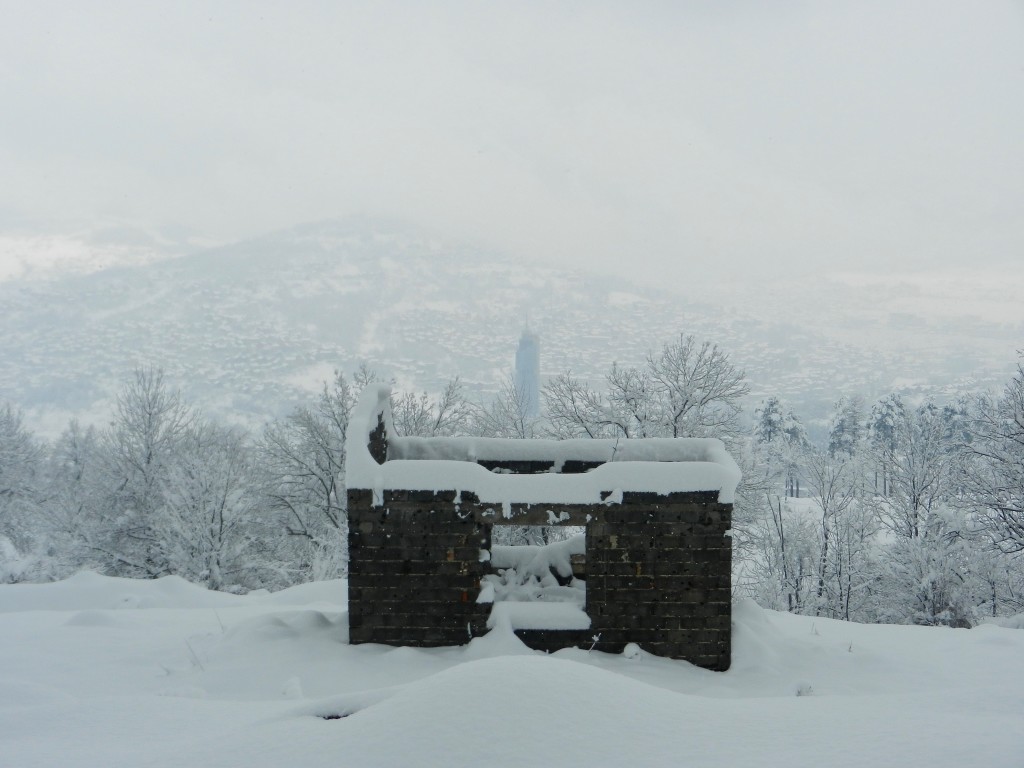
Bosnia and Herzegovina has arguably had the most difficult and turbulent transition of all the former Yugoslavian states. Following the dissolution of Yugoslavia and the declaration of Bosnia’s independence in 1992, Bosnia almost immediately found itself at the heart of an international armed conflict that would drag on for more than three and a half years. Depending on whom you ask, the conflict could be interpreted as an act of aggression or as a civil war. Bosnia was, and still is, a multi-ethnic country, with Bosniaks, Serbs, and Croats making up the majority of the population. While these groups had previously co-existed peacefully, after Bosnia declared its’ independence the Bosnian Serbs and their supporters began to mobilize to secure Serbian territory. As the fighting spread across the country, the Serb and Croat minorities were backed by Serbia and Croatia respectively, both aiming to expand by securing portions of Bosnia for their own. After the war was over, Bosnians began to pick up the pieces of a country grieving for what was lost and a population coping with the psychological and emotional trauma inflicted from years of war, violence, and genocide. On top of this, people still had to take their lives in their hands each time they left marked areas as vast swathes of countryside, villages, and forests had been left littered with land mines.
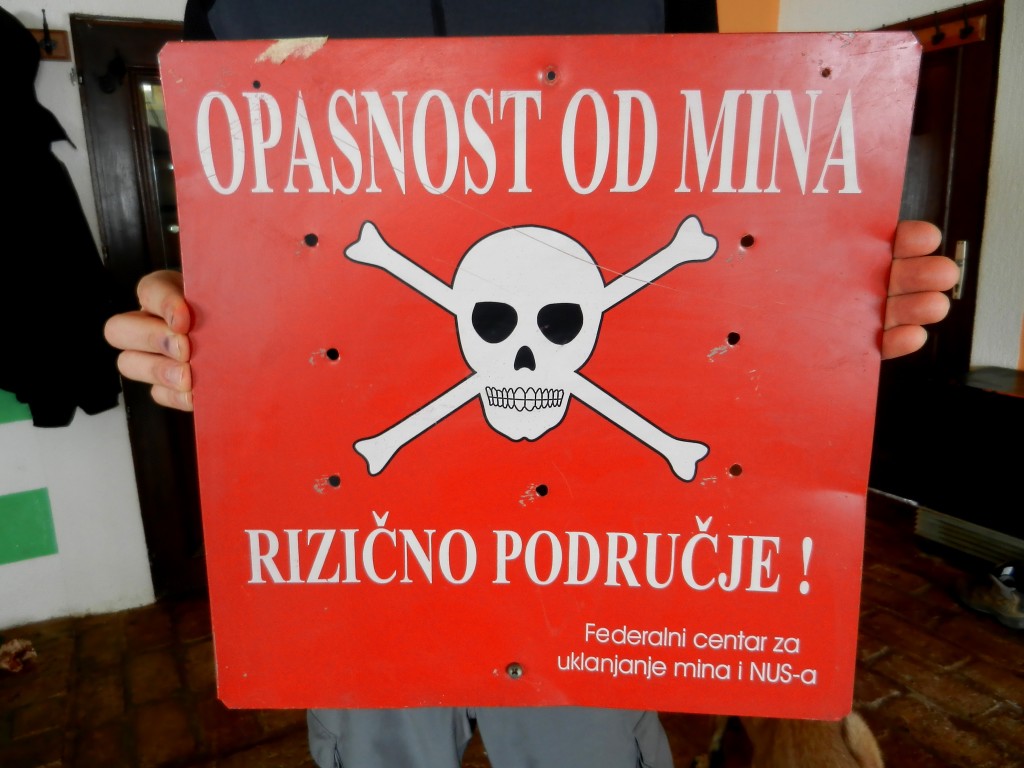
Today, people are still dealing with the aftermath of the conflict, physical and psychological, but you can feel optimism and the desire to simply move on and forward. It was incredibly inspiring to speak to people and feel this lack of wanting lay blame, seek revenge, or despair over what is still a monumental task of moving forward. People simply want to move on from what happened and live their lives. It’s hard to say if it’s forgiveness exactly, but at the very least it felt like there was a lack of bitterness that we had felt in other places.
Stepping into baščaršija on our first evening exploring Sarajevo, I thought I had taken a strange turn and stepped back onto the streets of Istanbul. The Turkish heart of Sarajevo beats lively and strong with a swirl of European influences. To our delight, we were suddenly surrounded by our favourite Turkish indulgences once again: ayran, baklava, pulverized coffee, fresh Turkish delight, and strong tea. But unlike in Turkey, here we could find them alongside our new Balkan favourites of ćevapi, sheep cheeses, kajmak, ajvar, and beer! In all fairness, there are a lot of similarities and shared dishes across the Balkans and Turkey, but it can be hard to find them all in one place the way they are in Bosnia.
Sarajevo is the embodiment of the cultural mosaic that comprises Bosnia and Herzegovina. In fact, Bosnia and Herzegovina’s tourism website boasts (and for good reason) that Sarajevo is one of the few places in the world where you can find an Orthodox church, Catholic church, mosque, and a synagogue all within easy walking distance of one another. It never ceased to make us pause on our long trek back up to Olywood in the evening when the city would suddenly erupt into an orchestra of church bells and the Islamic call to prayer.
One day, we opted to join the Free Tour of Sarajevo to get an in-depth glimpse into the city’s history. If you’ve never tried a free tour, you really should. From our experience, they’re usually fairly casual but full of interesting/insightful stories that you probably won’t find in your average guidebook. They are technically free (contrary to the guilt-tripping guide in London that actually made a couple of people leave midway through the tour!), but tips are always appreciated.
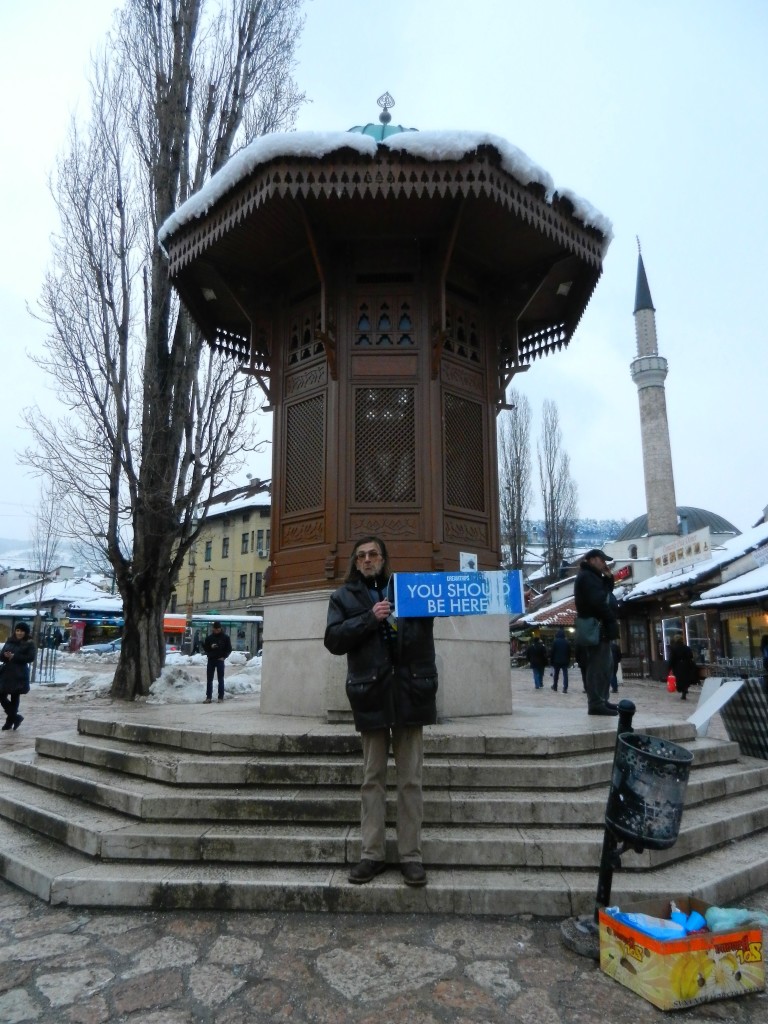
Lucky us, we actually ended up being the only people on our tour! We had an eccentric, chain-smoking guide (he reminded us of Christopher Lloyd in Back to the Future, it was awesome) who gave us a lot to think about in terms of “the good, old days of Yugoslavia”– a paradise, as the older generation remember it. Starting the tour with a bang that echoed across continents and reverberates to this day, we started at Latinska ćuprija. It was at the northern end of this bridge, “the Latin Bridge”, where Gavrilo Princip shot and killed Archduke Franz Ferdinand of Austria, thus beginning the First World War. Our guide was quick to point out that while most people think the assassination happened on/just in front of the bridge, in fact it happened just down the street. Princip was actually considered a hero during the Yugoslav-era, the bridge was renamed Principov most after him and wasn’t changed to Latinska ćuprija until after the Bosnian war.
The rest of the tour took us all around Sarajevo’s old town, giving glimpses at various points in Sarajevo’s long history. We briefly stepped into Morića Han, a caravanserai or roadside inn, which was built in 1551 to service the traders coming and going from Sarajevo’s bustling marketplace. The han still operates to this day for purposes that match historical context, including a restaurant and Persian carpet shop. The beautiful mosaic lamps I fell in love with in Turkey lit up the wool carpets, and once again I had to remind myself that no, the lamps would not survive the next several months in my backpack, don’t even try.
Our next stop was Gazi Husref-bey’s Mosque, a beautiful place of worship, built in 1530. You can find the name Gazi Husref-bey all over the city as he made huge contributions to urban development in downtown Sarajevo. In addition to his mosque, Gazi also ordered the construction of numerous other mosques, the covered bazaar (Gazi Husrefbegov bezistan), the city’s first Islamic school, public baths, the old clock tower (sahat kula), and much more. With his influence, Sarajevo became one of the most advanced cities in Europe at the time. Directing our gaze upward, our guide pointed out the curious face of the “clock” on the old clock tower, and asked us what time it was. Bewildered, we replied we weren’t sure as it was written in what we presumed to be sanskrit and the hands weren’t in the places we would have expected at that time of day. In fact, the clock keeps lunar time to indicate the the times to pray, rather than the time of day as we interpret it. Since the time of sunset changes throughout the year, traditionally a timekeeper was charged with maintaining the clock’s accuracy, a position that would be passed down through the family line. Neat, eh?
Our tour ended on a few last, sobering sights. Crossing the literal “line” marking where the more eastern and western influenced sides of the downtown meet, we soon found ourselves in front of the Sacred Heart Cathedral. Taking us around the side of the church we stood staring down on what looked like the result of someone dropping a bucket of red paint. This was one of Sarajevo’s roses, a scar in the pavement caused by a mortar shell that had been filled with red resin. These scars stood as memorials where a mortar shell had killed innocent civilians.
Bosnia and Herzegovina was a fascinating country for us to visit. It completely surprised us; where we were half-expecting to find a country still bearing all the scars and sadness of the recent war, we found it to be proud, vibrant, and incredibly beautiful. While of course the country is still recovering, the heart and warmth obviously never left. As we continued on our journey by train to Mostar, we waved goodbye to Sarajevo all the more excited to see what Bosnia had in store for us around the next bend of the track.
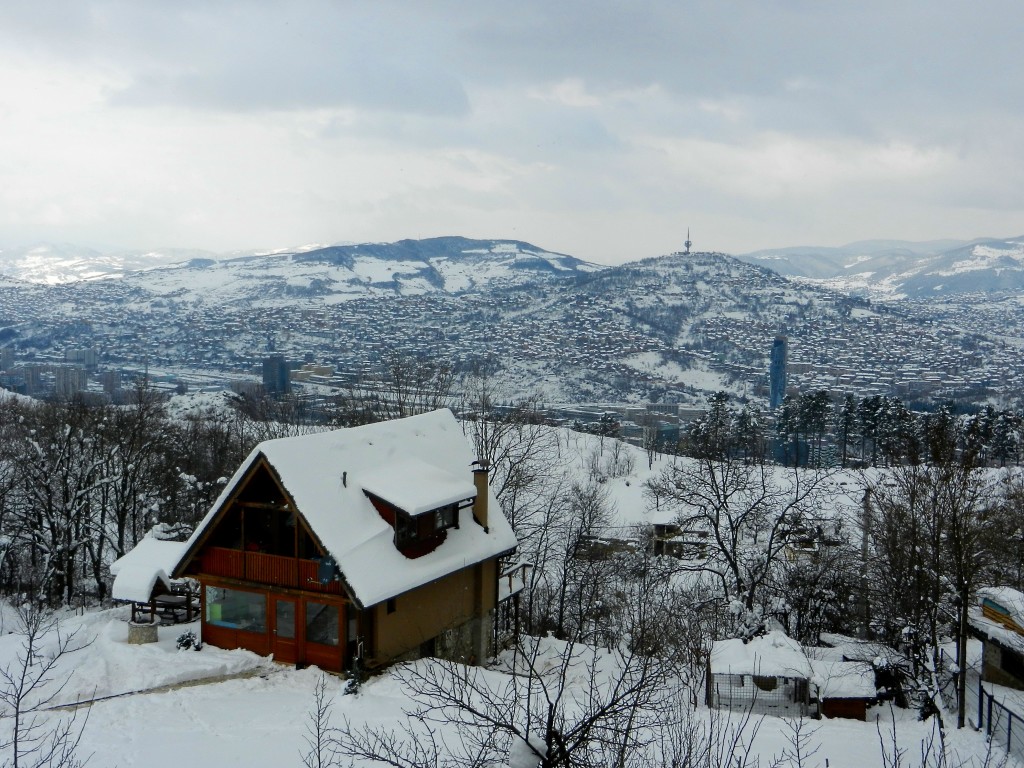
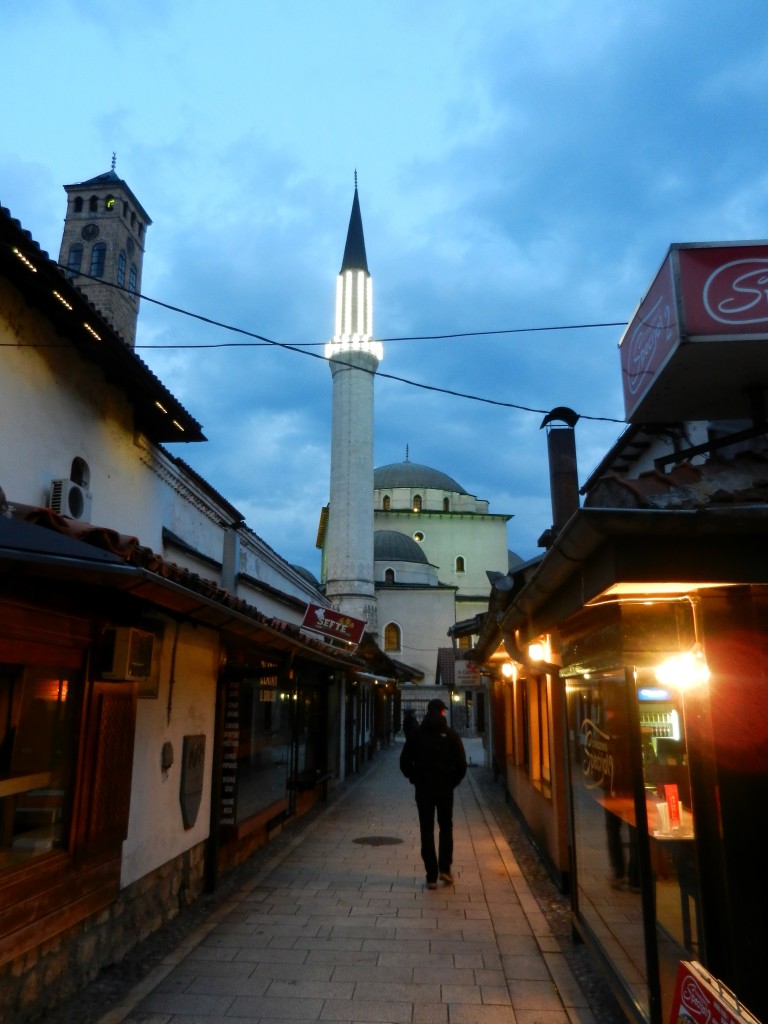
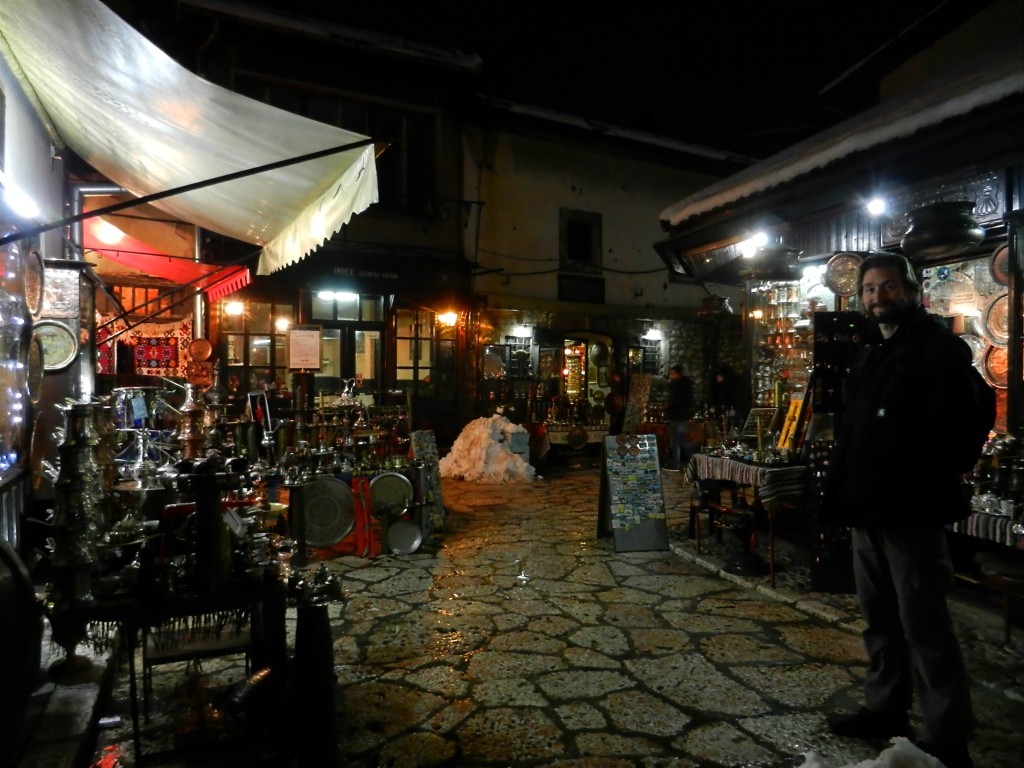
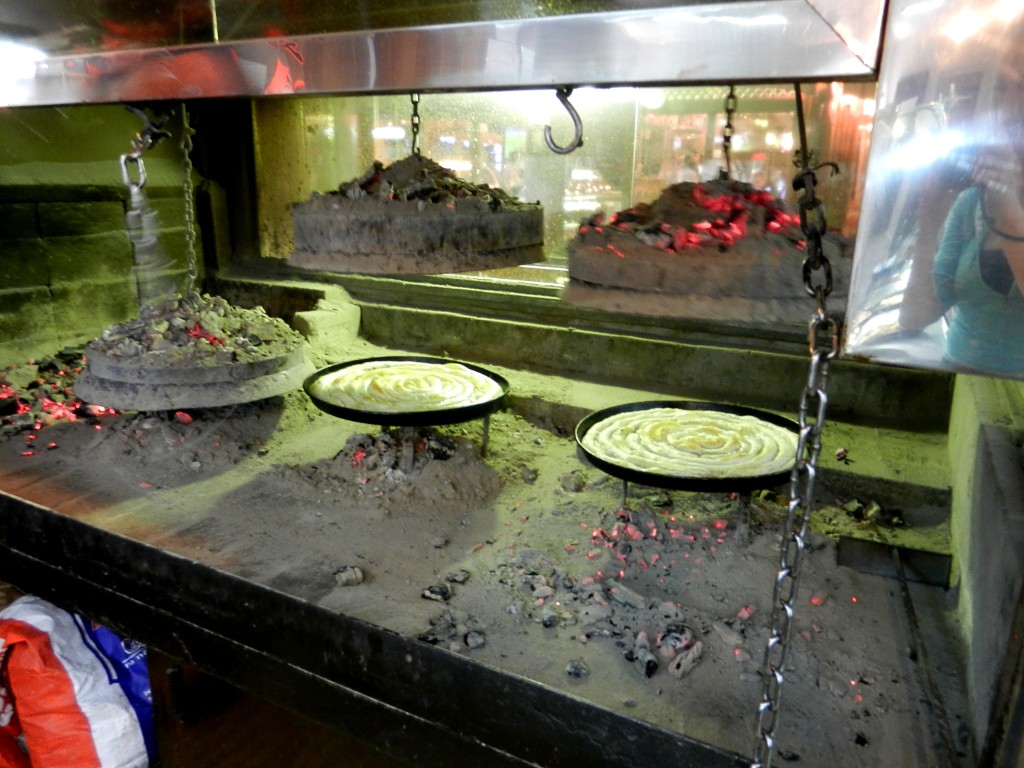

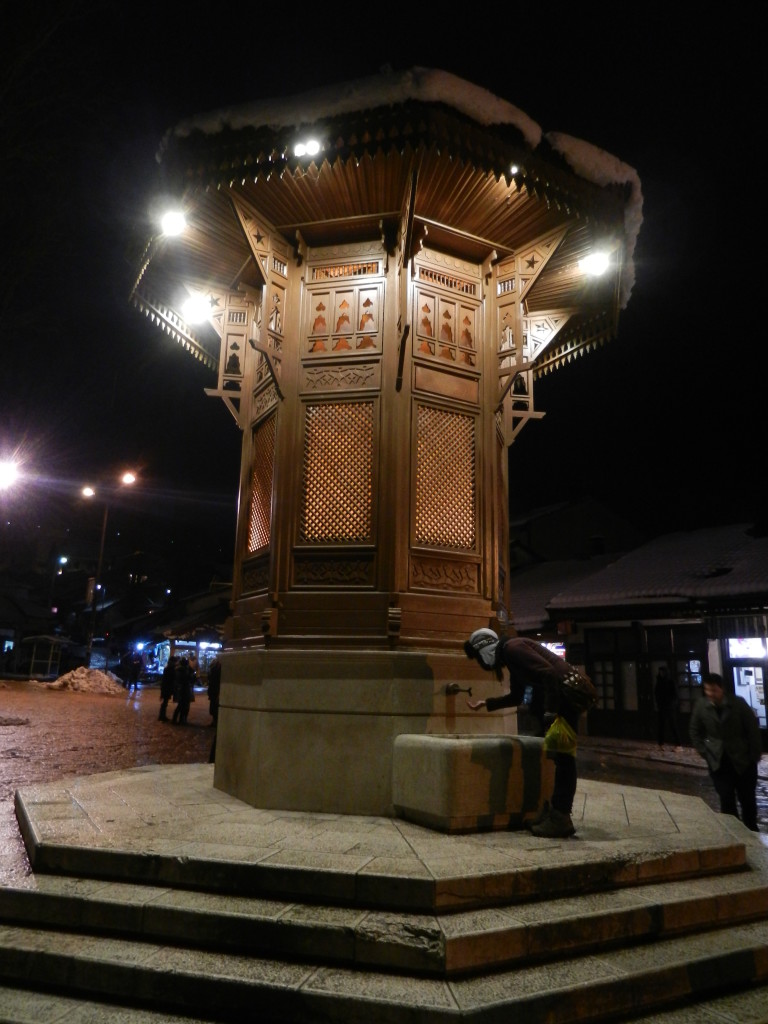
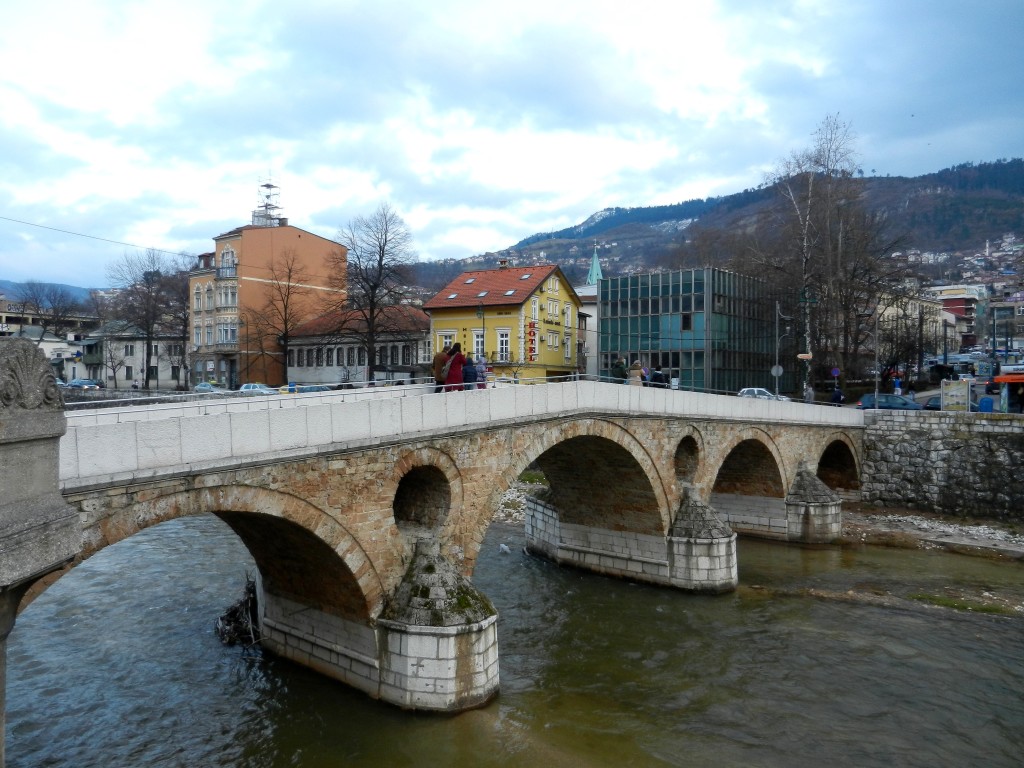
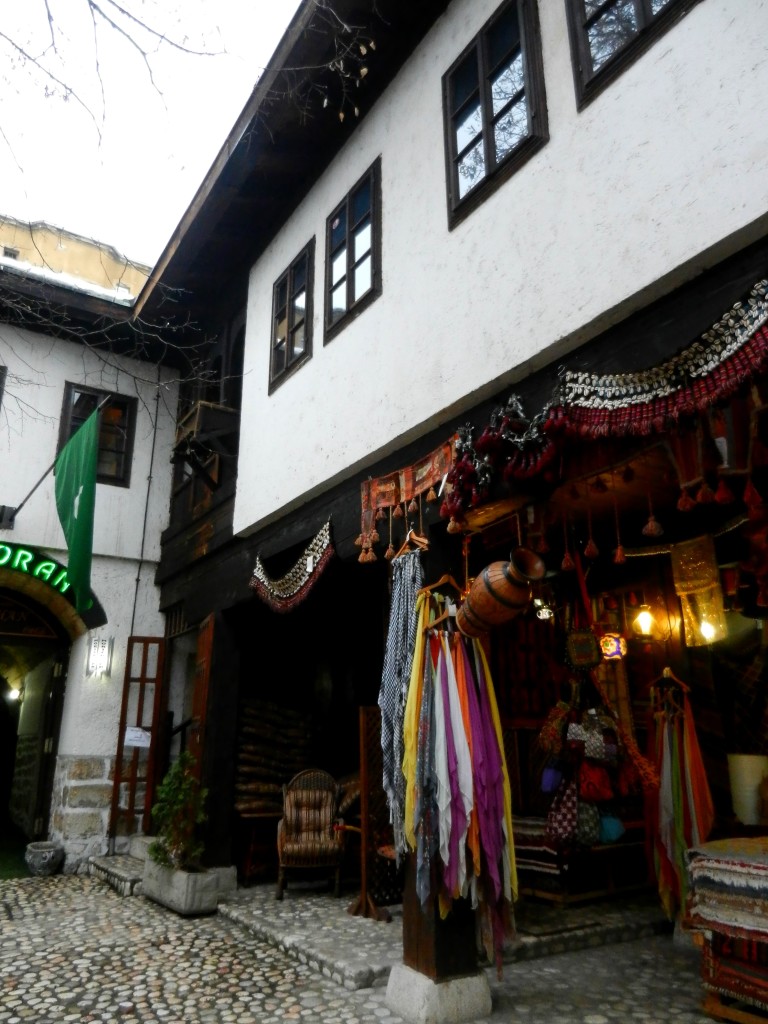
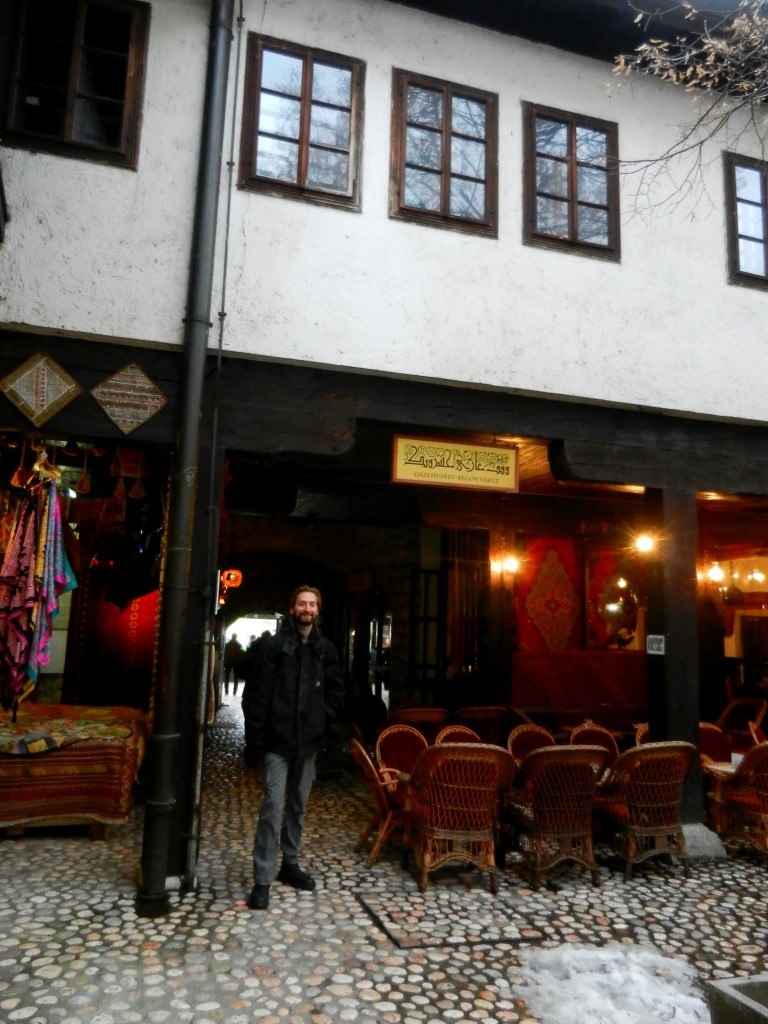
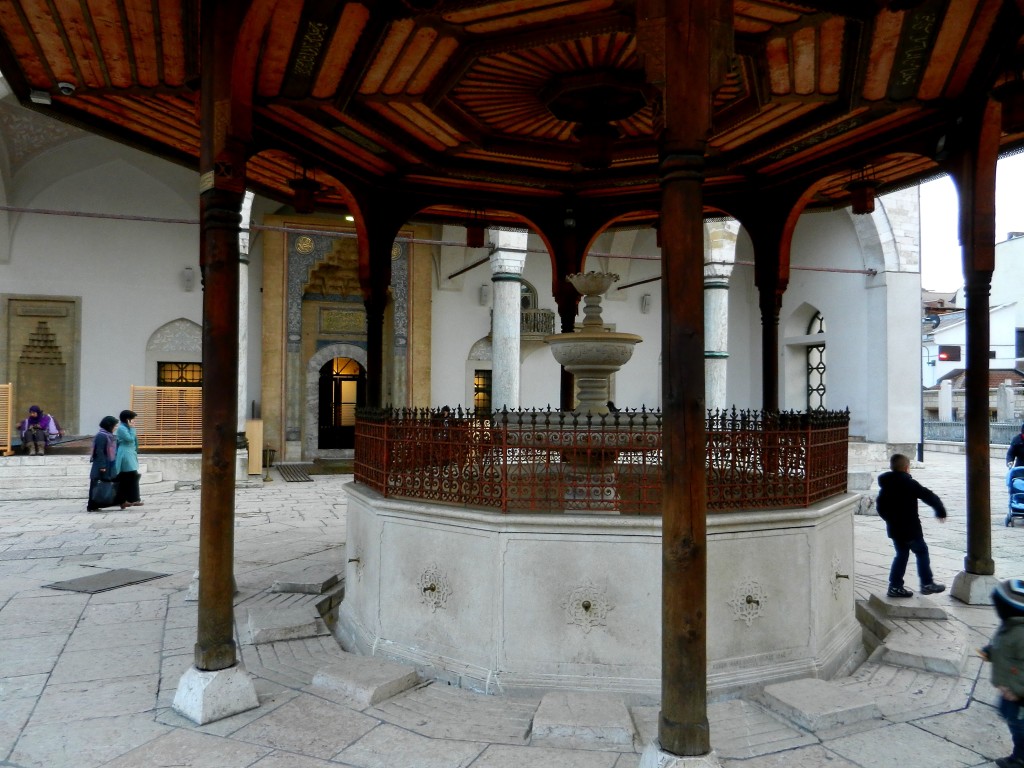
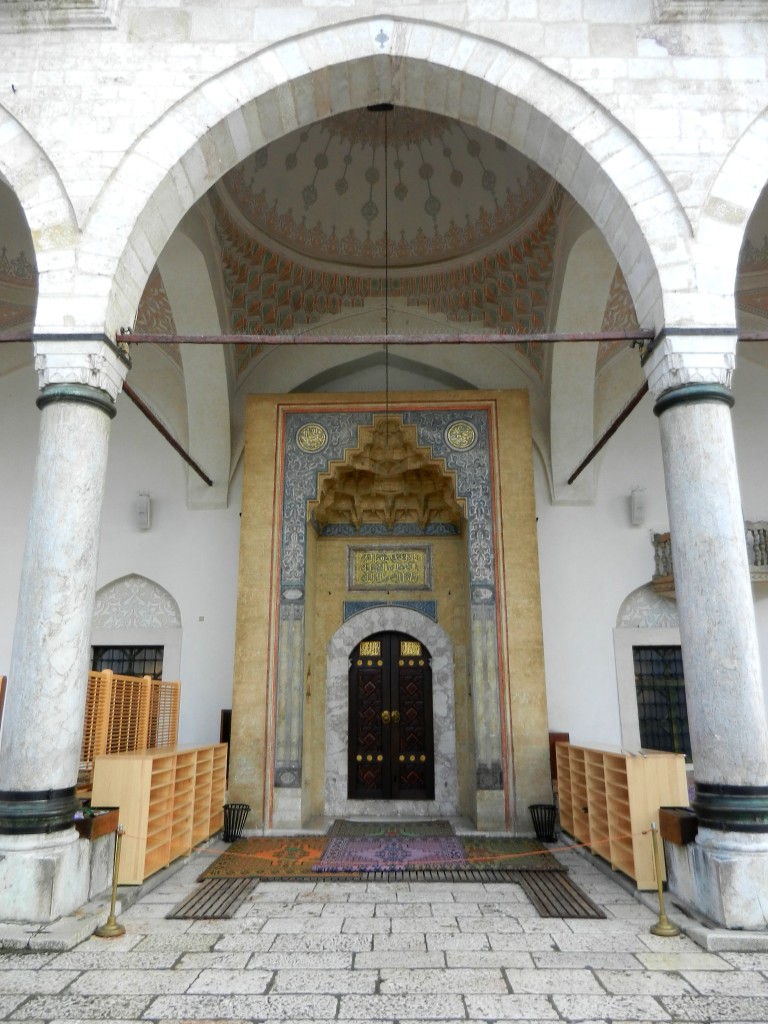
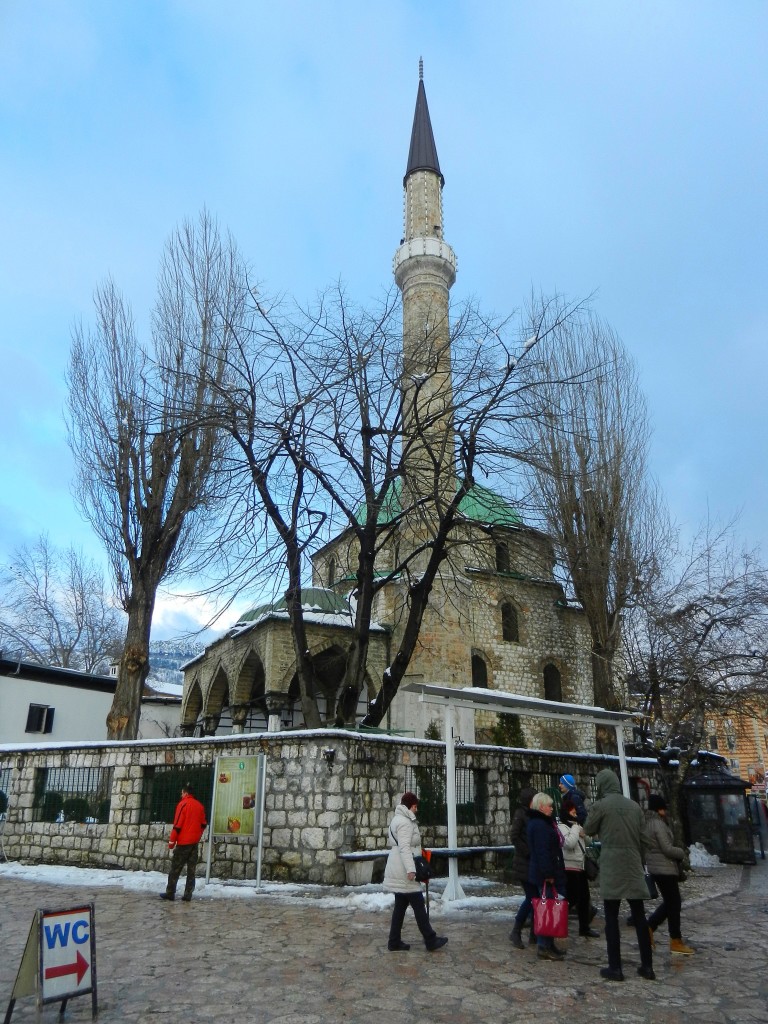

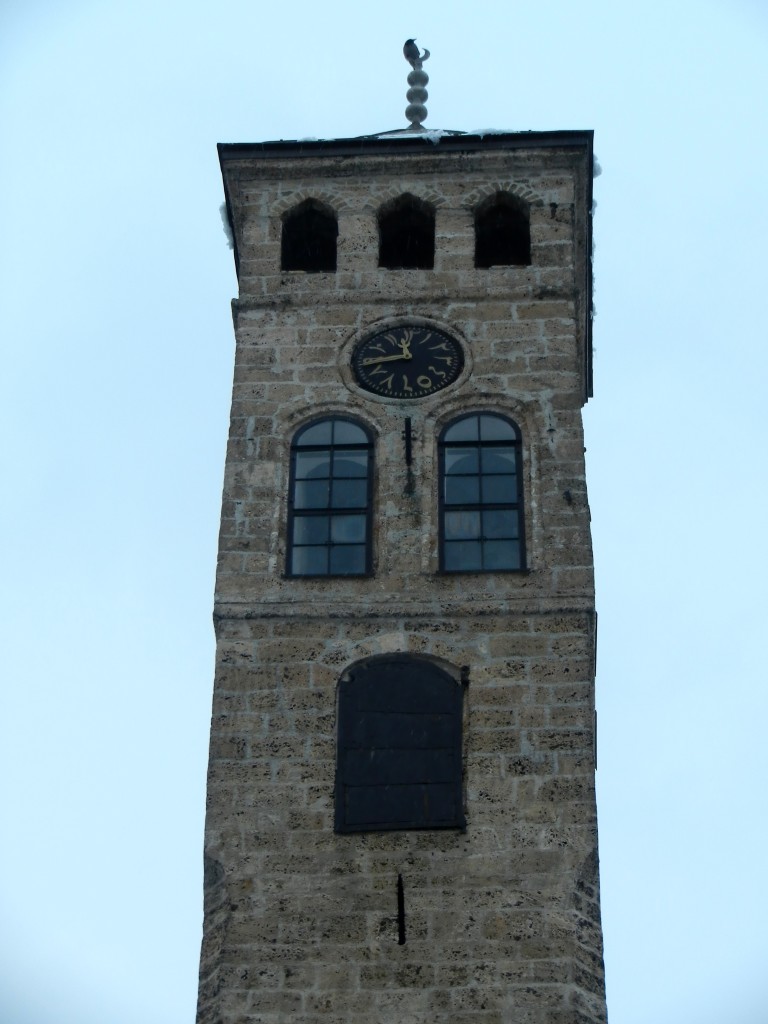
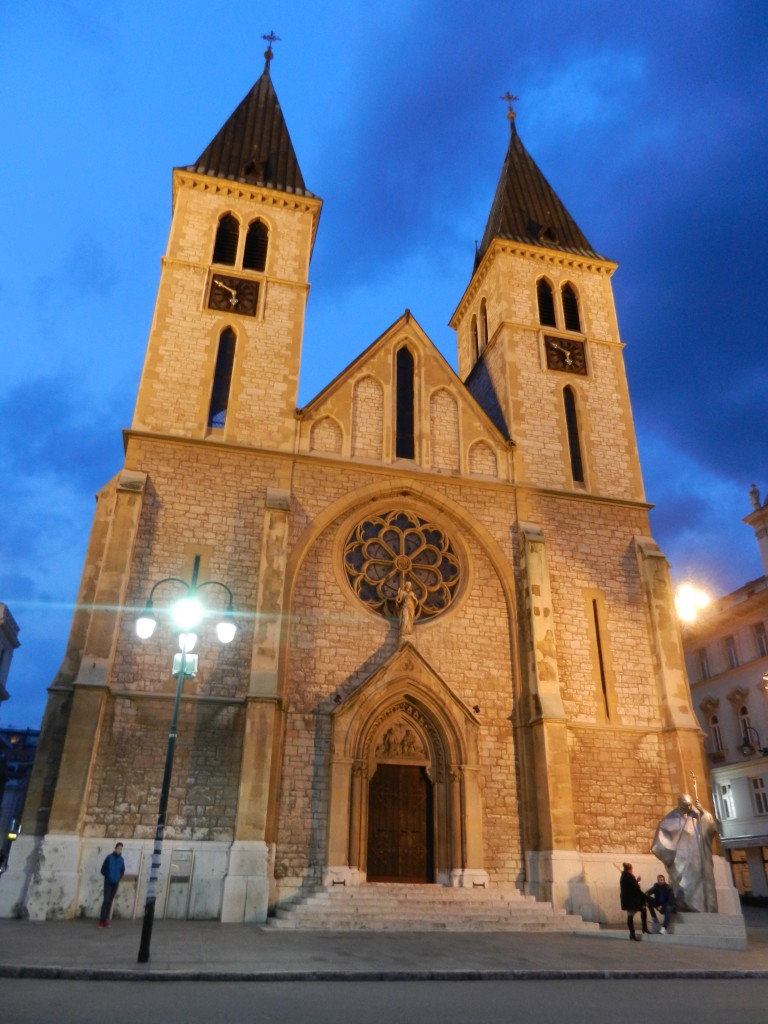
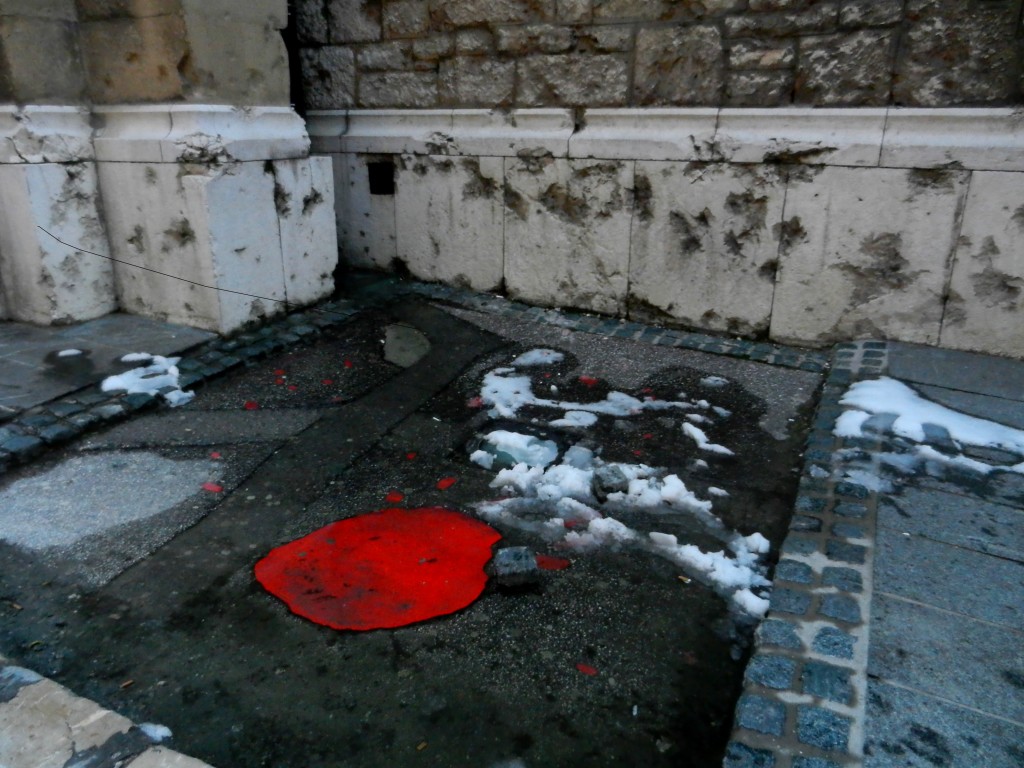
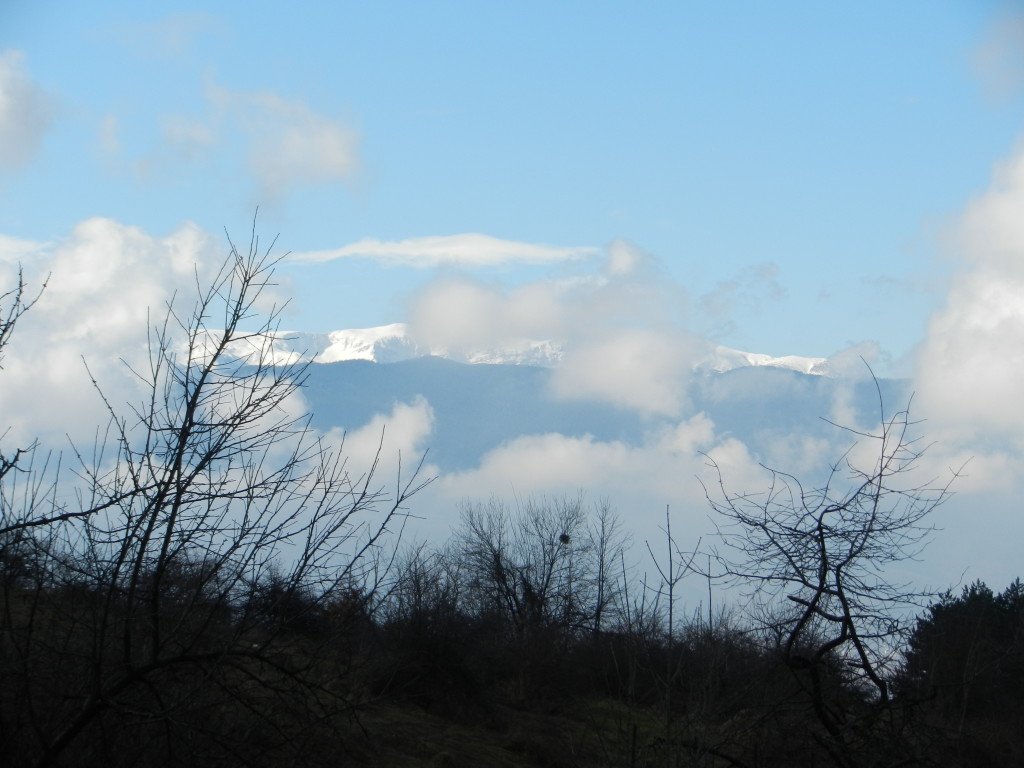
Beautyfull pics Asleigh thank you for sharing.Xx
Thank you, Coby! We miss you guys and hope all is well in Hungary 🙂